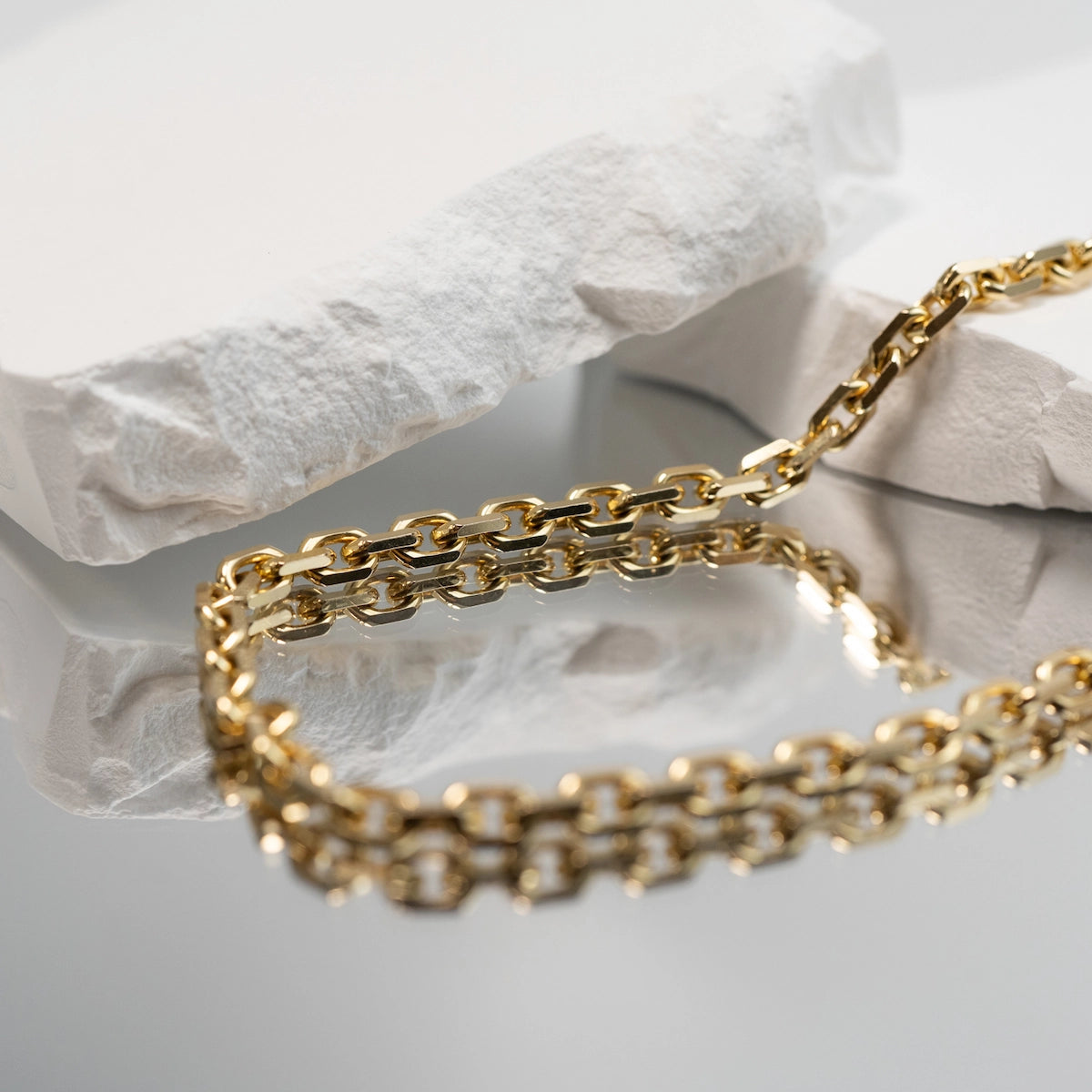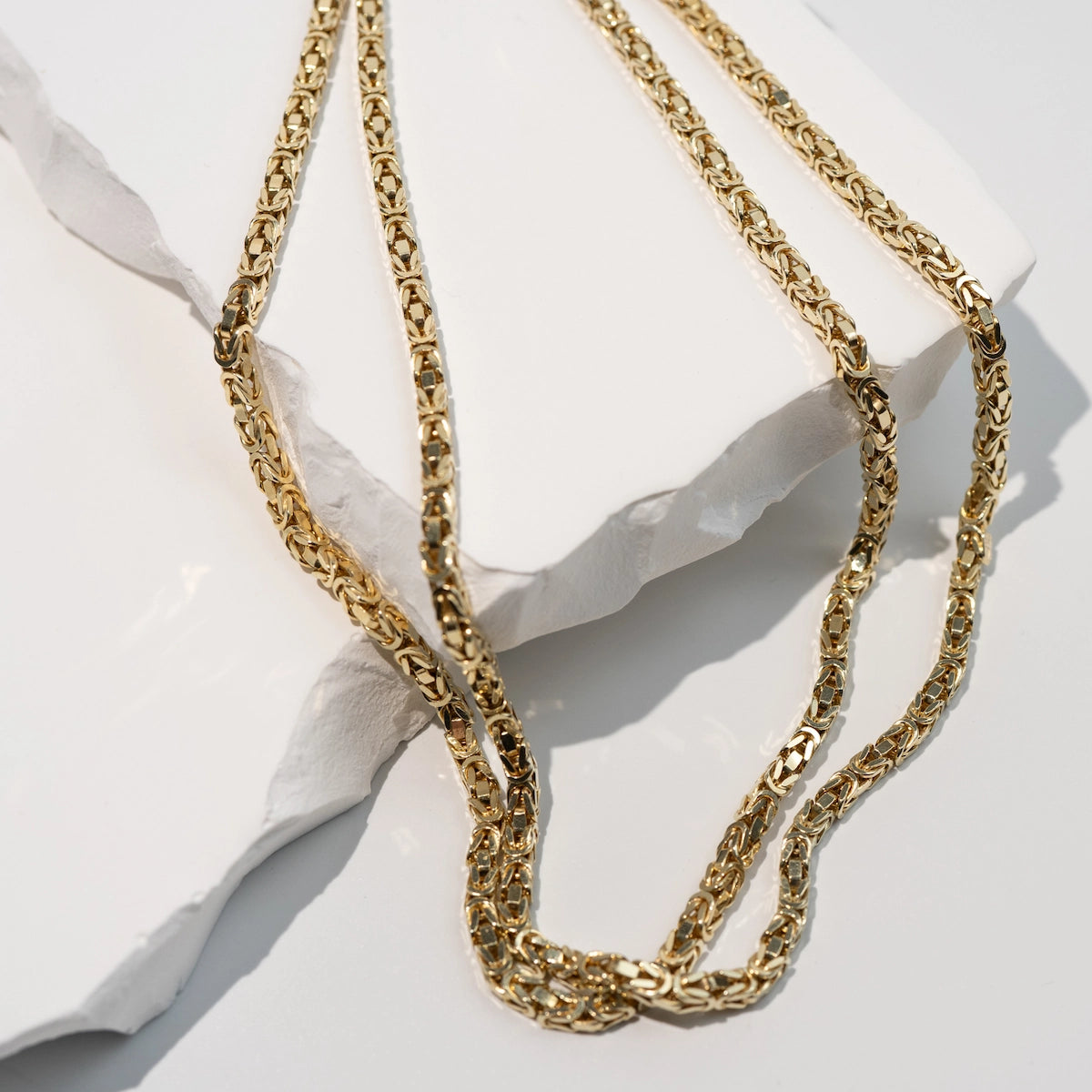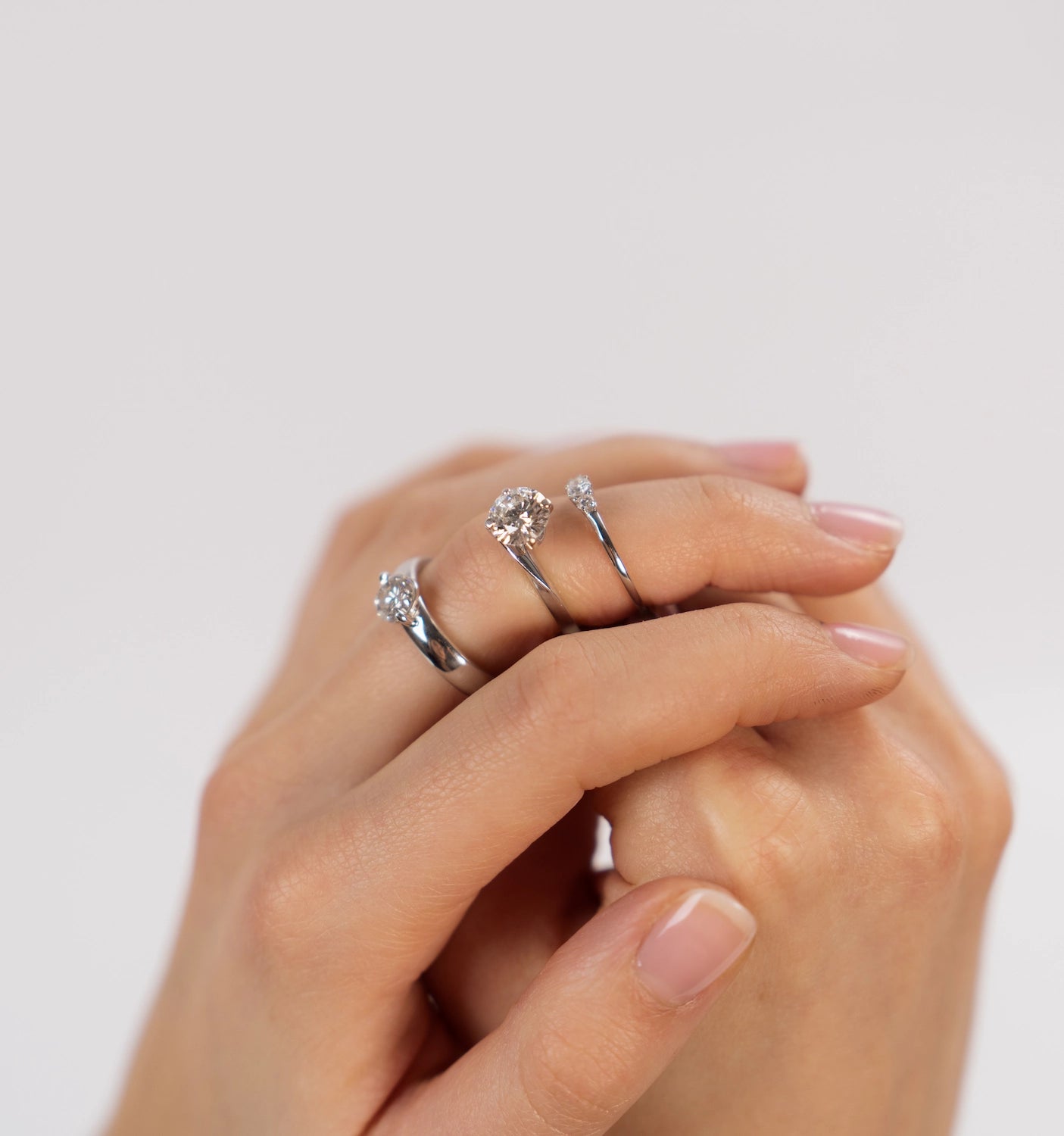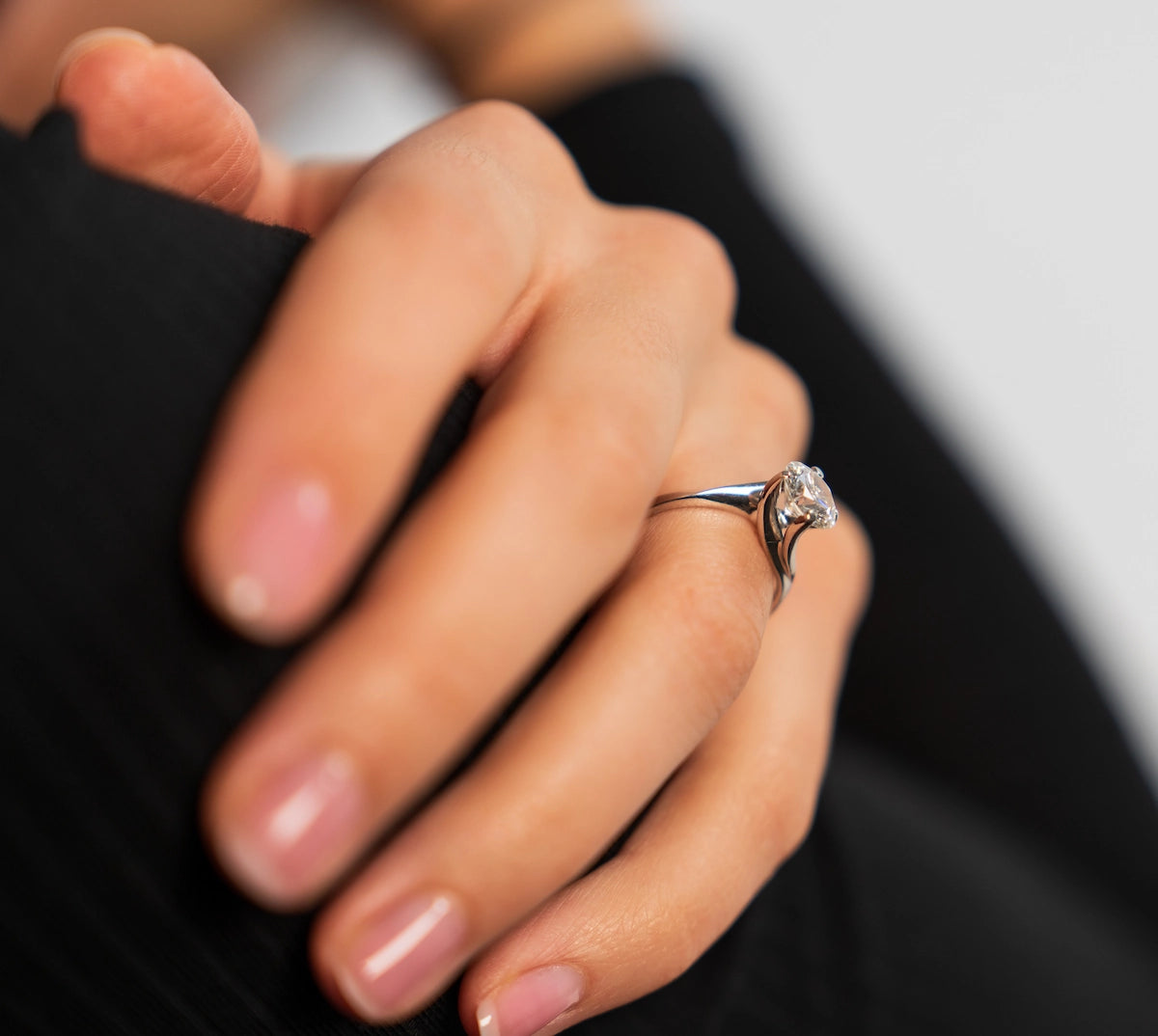Differences and things to know
Jewelry materials
Jewellery is as diverse as its wearers. There is a piece of jewellery to suit every style and every preference. The design plays an unmistakable role. Whether opulent and eye-catching or delicate, the effect of a piece of jewellery also depends on the raw materials used.
Chains, rings, etc. are perceived differently depending on the material used. Do you prefer a noble, warm rose gold or the cooler shine of silver? Find out what the different materials are like and what you need to consider.

Timeless & everlastingly beautiful
Gold jewelry
Gold - this precious metal virtually stands for exclusivity. This is why the metal is also used in luxurious jewelry.
In the world of jewelry, various alloys are used for gold jewelry. The 8, 14 and 18 carat alloys are the most common alloys for gold jewelry. The purer the gold, the more intense the gold tone shimmers. But fine gold is not only valuable, it is also very soft. For gold jewelry, gold should therefore be processed in the form of an alloy with other materials. This means that your piece of jewelry will be more resistant and durable than pure fine gold.
Gold jewelry can look very different depending on the alloy. Gold is versatile and can be adapted to your own individual style: elegant classic yellow gold, simple cool white gold or warm, more feminine red gold.

The meaning of carat in gold jewelry
What do the terms gold 333, 24 carat gold or 750 gold actually mean?
In order to protect gold against external wear, to make it easier to work with and to achieve a certain gold color, gold is processed in various alloys. Silver, platinum, copper or nickel are mixed into the fine gold. This is how the goldsmith achieves the desired color and degree of hardness. How much fine gold do the typical alloys used in jewelry contain?
| Goldlegierungen: | |
|---|---|
| Gold 333 |
8 kt, 33,3% Goldanteil |
| Gold 375 |
9 kt, 37,5% Goldanteil |
| Gold 585 | 14 kt, 58,5% Goldanteil |
| Gold 750 | 18 kt, 75,0% Goldanteil |
| Gold 833 |
20 kt, 83,3% Goldanteil |
| Gold 916 |
22 kt, 91,6% Goldanteil |
| Feingold 999 |
24 kt, 99,9% Goldanteil |
One material, different effects
Gold Compositions

Yellow gold
The classic and probably best-known variant is the yellow gold alloy. It is a combination of fine gold, silver and copper. The rich yellow gold color is most similar to the basic tone of fine gold, as the reddish tone of the copper and the "white" silver balance each other out.

White gold
The cool shine makes white gold look more like silver to some at first glance. Nevertheless, white gold jewelry has its own shiny nuance. The color is created by mixing platinum, silver and other metallic elements with the fine gold.

Rose gold
How is the warm rose color created in contrast to classic yellow gold? For rose gold, copper is mixed with fine gold. The stronger the red color, the higher the copper content of the alloy. Rose gold, also called red gold, is very harmonious and can be ideally combined with warmer colors.

Bright & Stylish
Silver jewelry
Silver, also called Argentum, is a particularly important material in jewelry making. As with gold jewelry, alloys are used for silver jewelry. 925 sterling silver in particular has the positive properties for jewelry making. 925 silver consists of 92.5% silver. The properties suitable for jewelry are achieved by adding copper and palladium. As a material with particularly resistant surface properties and an attractive appearance, silver is the ideal material for everyday jewelry.
Visually, silver jewelry looks stylish and cool. Silver ensures a timeless appearance in rings, necklaces, bracelets and earrings. Even if silver jewelry and white gold look similar at first glance, the materials are very different - and not just in price.


Sparkling & Radiant
Diamond jewelry
Gemstones shine in intense colors and give every piece of jewelry an extraordinary touch. Along with emeralds, rubies and sapphires, diamonds are also gemstones.
Bright, radiant, sparkling - there are many adjectives to describe the special effect of a diamond and the incomparable play of light. Almost no one can resist the fascination of a diamond.
The diamond is then cut to create a brilliant, which is used for most pieces of jewelry. The cut is crucial. It determines how the light is refracted in the jewel.
However, the cut is only one of the four "C's" known for diamonds. The value of a diamond is measured by "carat", "cut", "clarity" and "color". Carat determines the weight of the diamond, cut the type of cut and accuracy, clarity the purity (inclusions inside the stone) and as a final factor the color of the diamond plays a decisive role. Diamonds can be valued based on these factors.

